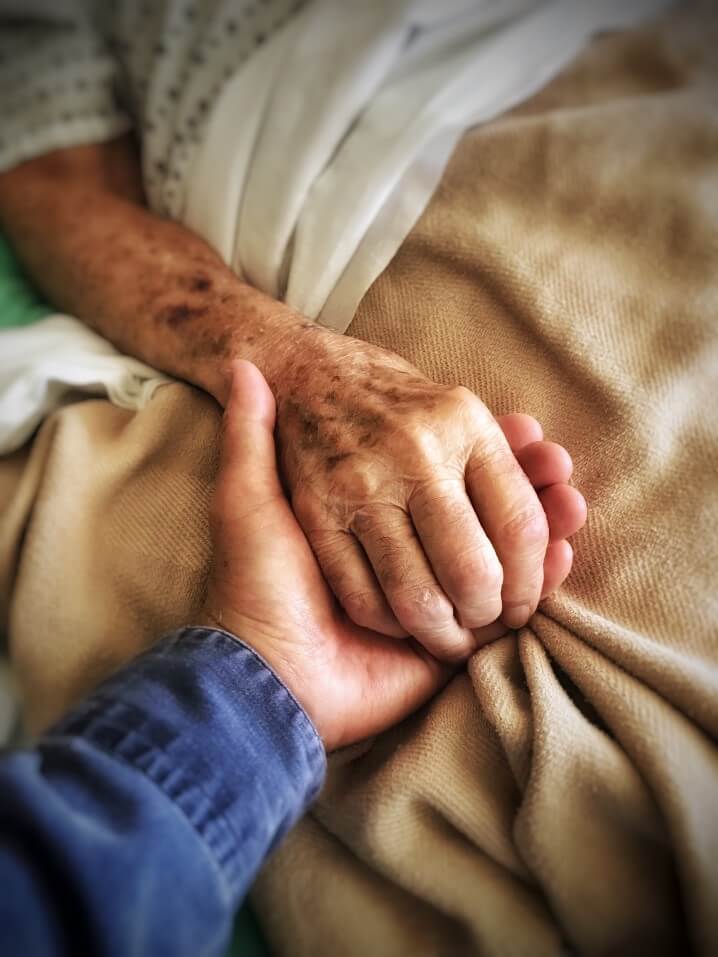Dealing with Complicated Grief
It doesn’t take high emotional intelligence to understand the pain that the loss of a loved one can bring.
Death is irreversible and also confronts us with the abyss of transcendental questions that we may not understand or do not want to assume.

dealing grief women s tired screaming distraught frustration grief hysteria fear despair parting mental feeling
Grief can include a mixture of reactions where the emotional pain of the loss coexists, the feeling of bewilderment or human helplessness in the face of the unknown, or the feeling of injustice if it seems to us that it did not have to happen yet. There may be disbelief, emotional dullness, anger, despair, shock, guilt, anxiety, fear, or even feelings of relief. Some losses can be devastating and turn a person’s life totally “upside down.” It can be accompanied by depression-like symptoms, including, for example, sadness, trouble sleeping, changes in appetite, difficulty concentrating, memory loss, tiredness, etc. These reactions are normal when we lose someone with whom we were affectively linked, and they fulfill an adaptive function, helping us assimilate the new situation.
To speak of persistent complex grief, at least 12 months must have elapsed since the person’s death, and there must be continuous longing for the deceased, which can be accompanied by intense grief, frequent crying, and concern about the dead or about the way he died. It is convenient to relativize the temporal criterion since each person is different. The important thing is the level of suffering of that person and whether or not they are progressing.
People who get over grief go through different stages. At first, shock and denial of what happened, then emotional chaos with a mixture of anger, guilt, and despair, followed by a period of depression when assuming reality. Finally, a way is found to get on with life while maintaining some connection with the person who has been lost.
In recent years there has been a preference for understanding grief to overcome a series of tasks. The task approach gives the person a more active role, indicating what one can do to recover, compared to the stages through which one has to wait to pass more passively.
In addition, to cope with grief healthily, we have to balance mourning the person who has left and, somehow, continuing to live and function. When a person focuses her energy on getting on with her life and keeping busy by pushing away grief or vice versa, less progress is made.
According to J.W. Worden, to properly face the duel, you must complete a series of tasks. The objective of working with grief is to help the person overcome the obstacles that prevent them from meeting each of these tasks:
1. Accept the reality of the loss. This person has left and is not returning; intellectual acceptance is more manageable than emotional acceptance. For example, some dreams about the deceased still alive may suggest that the person is in this phase, and it is as if his brain is trying to help by reminding him by contrast upon awakening that that person has already died.
In general, it is recommended to communicate the news clearly and directly, giving the person the opportunity to participate in the funeral and other rites (e.g., visits to the cemetery). These rites serve an essential function and help to accept the reality of death (e.g., for most people, it is vital to see the body of the deceased at some point, which is in contrast to the complicated grief of people who lose loved ones whose body is not found or it has not been possible to see).
You have to take time to assimilate this reality. Unhealthy reactions are, for example, acting as if that person is still alive, immediately letting go of everything that reminds that person, and even forgetting her face so as not to think.
2. Work out the pain of loss. Death produces painful feelings that need to be expressed. There has to be a place for this pain. Sometimes society does not help (e.g., when someone with good intentions advises us not to be sad, that person would like to see us happy)—suppressing grief can extend grief (e.g., when you don’t talk about the death and act like nothing). This task is encouraged through emotional expression. It is expected that optimistic (e.g., longing) and negative emotions can coexist towards the deceased (e.g., anger or guilt).
The person must be helped to balance positive and negative emotions that allow him to redefine the image of the deceased adaptively (e.g., my father loved me very much, but because of his education, he was not very expressive when showing affected). Suppose the person was left with the need to express something that he could not tell the deceased, or there was an open conflict. In that case, there are various strategies to address it (e.g., writing letters, the empty chair technique in which he imagines that he is facing his parent and communicates how you feel, etc.).
Very traumatic images or emotions can be addressed with emotional processing techniques. If the criteria for any psychological disorder (depression, anxiety, etc.) are met, they are dealt with in the usual way, and then the grief issues are addressed. If one parent has passed away, a scrapbook can be made of the deceased that the children can review as they grow and help them integrate the experience.
3. Adapt to the world without the deceased. This adaptation is external, internal, and spiritual. External adaptation refers to how it has affected daily life (it may involve learning new skills and taking on new roles). This phase is approached with problem-solving strategies for difficulties (e.g., learning to keep business accounts, making new social relationships, etc.).
Internal adaptation has to do with the person’s definition of himself and her self-esteem. Who am I now? How has this loss made me different? It is essential to redefine ourselves positively, even extracting some good aspects that we discover in ourselves due to the loss. The concept of resilience can be helpful to you.
On a spiritual level, the loss can shake the foundations of the world. It is essential to look for meaning or meaning (the definite purpose is not necessary, but if you find one: he had to learn something, he finished his task, there is an order in the universe even if we do not understand it, etc.).
4. Find a lasting connection with the deceased as you move on with your life. It is taking him with us, missing him but without severe pain or anguish, being able to get on with our lives. It is to live again. It is resolved when the person can take permission to stop suffering and think about the deceased without feeling overwhelming pain (e.g., dreams in which the dead communicates to the living person that he is well and that he wants him to continue to go ahead).

how to deal with grieving and grief holding hands and folded American flag given them at their fathers funeral sad death
People do this in different ways. Some maintain the bond by identifying with the likes or hobbies of the deceased or by assuming roles in the family that that person previously took.
Take some time, take care of yourself more than you did before, be kind and flexible with yourself, seek the support of people who love you, and think that this will pass if you do your part. People can overcome dramatic deaths and move on.
If you feel that you are not making progress, seek professional help. A psychologist can help you work out your grief in a healthier way.


